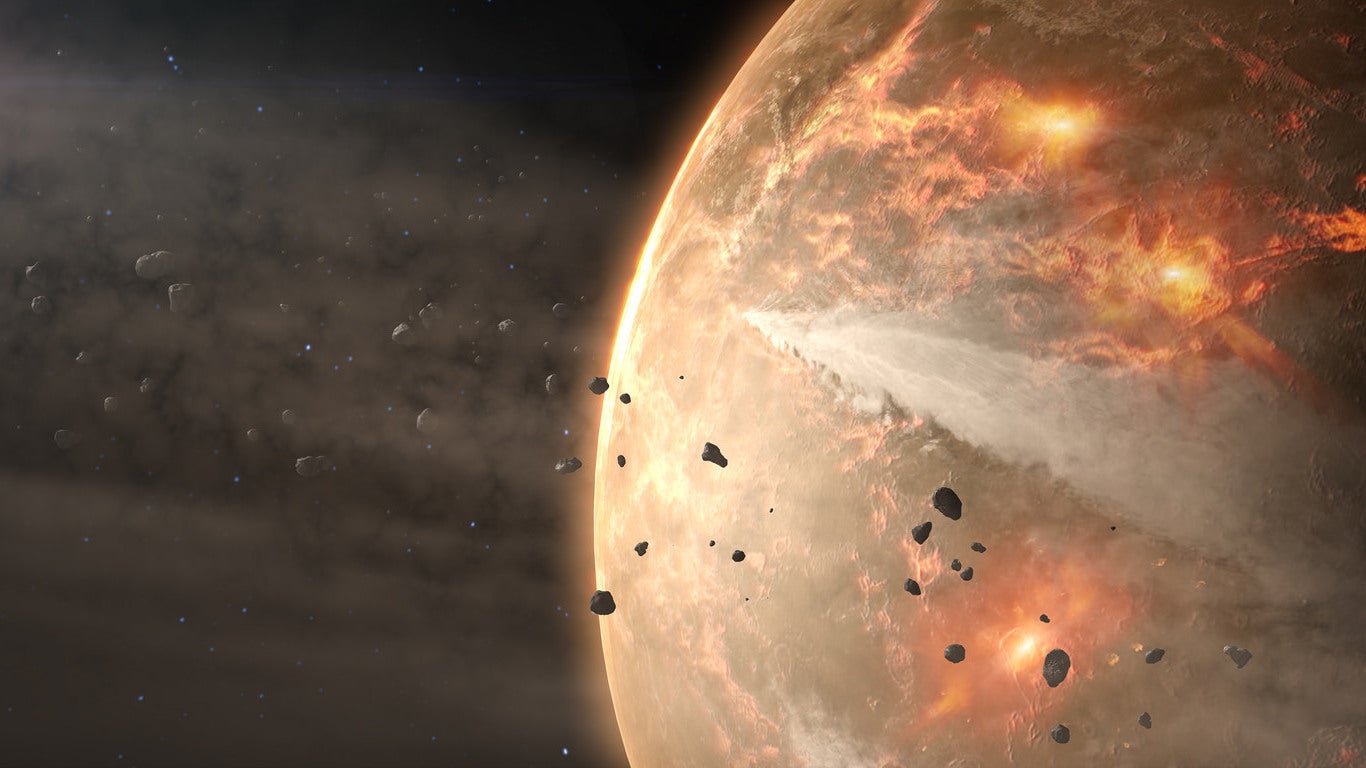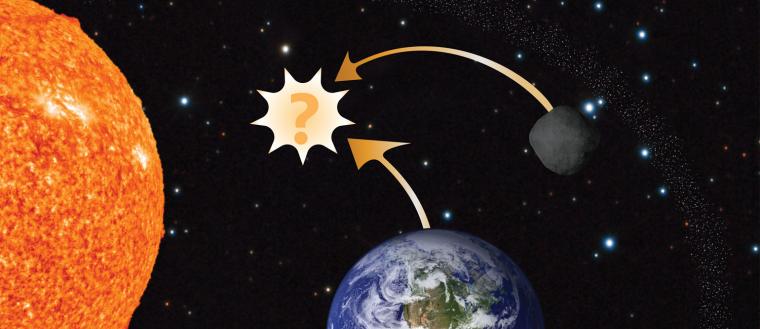How Worried Should We Be About Asteroids? Asteroids To Worry About

A new book explains the risk, tells us about the scientists tracking near-Earth asteroids, and offers advice on how to defend the planet.
Air & Space Magazine
|
Gordon L. Dillow is the author of , a well-researched book about the natural disaster that poses the gravest threat to Earth: collision with a large asteroid. Though writing about a serious subject, Dillow, a former newspaper reporter and war correspondent, has turned his reporting into a scientific adventure story as he takes readers into the desert to examine asteroid impact sites and pulls all-nighters with the scientists who search the skies for new threats. He spoke with Air & Space senior associate editor Diane Tedeschi in August.

What made you decide to write this book?
“I like to joke that I got a sign from the heavens. At 4 a.m. one morning in June 2016, I was having a cup of coffee on the back porch of my home in Arizona when suddenly the nighttime sky lit up in this weird, other-worldly red glow. Moments later, off to the northeast, there was a tremendous flash—a brilliant explosion that briefly turned night into day. NASA later explained that the flash of light was caused by a small asteroid—only five or six feet wide—that had hurtled through the atmosphere at 40,000 mph and then blew up with the explosive force of half a kiloton of TNT. But for me that just raised more questions. The more I looked into it, the more fascinating it was. I was hooked on asteroids—and I still am.”
How worried should we be about the possibility of a collision with an asteroid?
The chances of a civilization-ending collision with a large asteroid or comet—like the six-mile-wide asteroid that apparently wiped out the dinosaurs 65 million years ago—within our lifetimes or even our grandchildren’s lifetimes are really very small. At the other end of the size scale, Earth is bombarded all the time by small asteroids that burn up or explode harmlessly in the atmosphere, like the one I saw in Arizona. So it’s not the biggest asteroids or the littlest asteroids we need to worry about: It’s the ones in between. Unless we can figure out a way to stop it, someday our planet will be hit by an asteroid big enough to cause local or regional destruction—or even worldwide climate change from the dust and gases an asteroid impact can kick up. It’s not a matter of if, but only a matter of when. It could happen 500 years from now, or it could happen next Tuesday.

Are we investing enough in research and development to defend Earth against an asteroid impact?
In a word, no. It’s true that over the past two decades, NASA funding for planetary-defense programs against potentially Earth-threatening asteroids has increased dramatically. But it’s not enough. This year NASA will spend $150 million on near-Earth-object detection and related programs, but that’s less than one percent of NASA’s $21.5 billion budget. And when you compare that to the $700 billion or so we spend annually on conventional defense programs, it’s less than a drop in the budgetary bucket. I’m all for national defense, but we have to realize that planetary defense against asteroids is part of our national defense.
What are some of the more interesting ideas being proposed as a defense against an asteroid collision?
There have been a lot of really cool theoretical proposals about how to deflect an asteroid. You could bombard it with white paintballs to change its reflectivity, which could gradually nudge it off course. You could park a large object next to it, and let the object’s own gravity pull the asteroid slightly off its Earth-threatening track. And on and on. The problem with those ideas is that they would require a lot of time to deflect the asteroid—decades in some cases.

As it currently stands there are really only two practical methods of deflecting an asteroid. One of them involves nuclear weapons. When people think of using nuclear weapons against an asteroid, they usually think of Bruce Willis blowing up a giant asteroid in the exciting but scientifically-challenged 1998 film Armageddon. But in most cases you wouldn’t want to actually blow up an incoming asteroid. Instead, you would detonate a relatively small nuclear device next to the asteroid to nudge it a little off course. The problem is that there are longstanding international treaties prohibiting the use of nuclear weapons in space—and even if there weren’t, the whole idea of using nukes in space makes a lot of people uneasy.
So the preferred method is to use what are known as “kinetic impactors.” Basically it’s cannonball technology. You load up an unmanned spacecraft with a heavy chunk of metal and slam it head-on into the asteroid at a speed of thousands of miles per hour. The idea isn’t to destroy the asteroid, but simply to slow its speed by a tiny, tiny fraction. That way, when the asteroid finally reaches its expected rendezvous point with Earth, our planet will have already moved on in its orbit around the sun and the asteroid will miss us.
In fact, in 2021 NASA plans to launch its Double Asteroid Redirection Test (DART) mission to actually test the kinetic-impactor method on a small, non-Earth-threatening binary asteroid called Didymos. It will be the first time ever that an asteroid deflection method will be tested in real-space conditions. That will be an important first step, but we’ll still have a long way to go before we have a practical asteroid deflection system.
Is the media providing balanced coverage of the asteroid threat?

Actually, the asteroid threat is being over-reported—and badly reported—at least on social media and in the tabloid press. Hardly a day goes by that you don’t see a tabloid headline declaring “NASA Spots Monster Asteroid Headed Toward Earth.” You have to get to the bottom of the story to learn that the asteroid in question will actually miss Earth by millions of miles, which is close in space terms, but not really a threat. When you have too many headlines like that, there’s a boy-who-cried-wolf effect.
That’s not to say that potentially dangerous asteroids don’t come close to Earth. The bottom line is that the asteroid threat is real, and it requires serious attention. But we don’t need hyped-up headlines and unfounded rumors to make the asteroid threat scary. The actual science is scary enough.

0 Comments
Posting Komentar